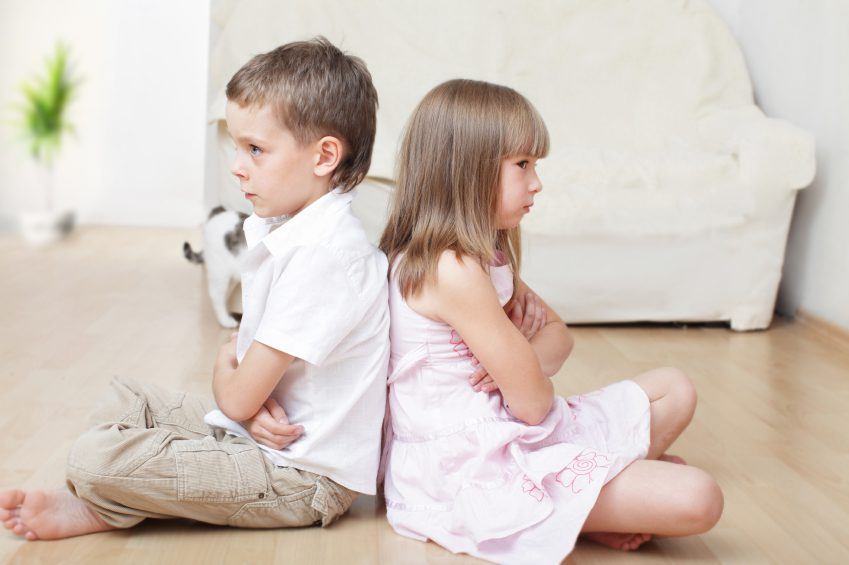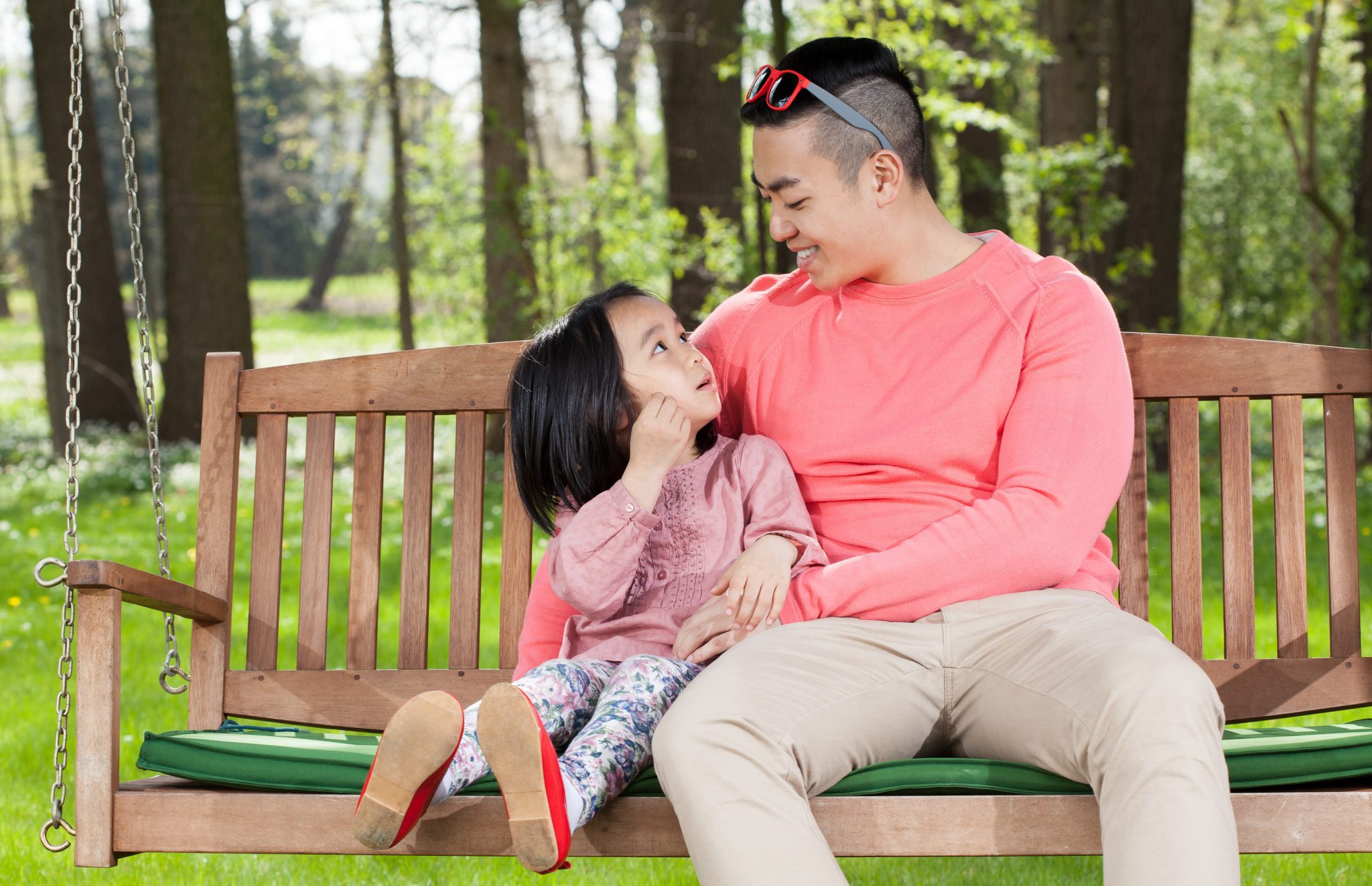Managing Sibling Conflicts: The Obvious and Hidden Battles

Posted in: Parenting Concerns
Topics: Child + Adolescent Development
A lot has been written on sibling rivalry, particularly about name calling, arguing, provoking, physical fighting, and other forms of overt hostility. Almost every article suggests that this is inevitable and normal. In drawing comparisons, writers often reference the animal kingdom – baby birds throwing weaker siblings out of the nest, carnivores snatching a sibling’s food or pushing them away from mom’s breast. After all, Darwin’s notion of survival of the fittest is a major part of evolution.
And while we don’t really know the personal experience of other parent creatures on our planet, we have a sense of how human parents commonly react: with frustration, irritability, sadness, feelings of powerless or overwhelm. Human parents simply want the fighting to stop. We want our kids to love and care for each other, and we want to be effective parents when conflicts arise.
Preventing or curtailing battles isn’t easy, and there are no simple or stock ways to intervene. But there are still things we can do as parents that really work. Before we look to some helpful tips, let’s step back and consider a few concepts to help guide our strategy.
Sibling “Rivalry”: Understanding Conflict
Rivalry implies competition – competition for greater attention, being favored by parents, or for enhancing personal status or self-esteem. Indeed, this is part of the picture.
But not all sibling unrest is rivalry.
It might be helpful to reframe these sibling battles as conflict. And we can look at conflict in two ways: externalized conflict between kids or internalized conflict. Some battles our kids endure are obvious. But others are hidden struggles – battles that may easily go unnoticed.
We all know the open warfare. Think of endless car rides with three kids in the backseat swatting or poking each other, staring and scowling, ruthlessly mocking or copying on another over and over and over.
“Mom, dad, make him stop!” It’s obvious there’s conflict here.
Of course, when you’re behind the wheel, what can you do? Typically, you start screaming: “OK, just stop it or else!” or, “Stop it or no dessert!” or, “If you keep this up, we’re going to crash!” This scenario is all too familiar.
Sometimes, though, a child’s trouble with a sibling is less obvious. Think about younger kids comparing themselves to a successful older brother or sister and feeling insignificant or incapable; or the shy kids who hate conflict and withdraw, secretly seething with anger and resentment; or the sibling of child with a medical or psychiatric illness who feels left out, guilty, or selfish asking for anything. We may have a sense something is wrong, but many parents don’t see the inner turmoil, and so the child suffers alone.
Causes of Sibling Conflict
Below are some common causes of conflict of which to be aware. Remember that some causes listed in each category may overlap with others.
Causes of Externalized Conflict
- Birth order. First-born kids generally have an advantage, as do the youngest. Middle children may have the toughest ride.
- Gender. Think about how you and/or your partner treat girls and boys differently. And consider kids with gender identity questions, who may be the target of abusive behavior.
- Temperament. Kids are born with different personality traits. Some are more aggressive, provocative, oppositional, or explosive, while others are more sensitive, quiet, touchy, or fragile.
- Talent. Some kids are just so good at what they do (sports, arts, academics, manipulating others) that they become objects of jealousy, or even develop a big ego and gloat.
- Developmental stages. Younger kids have a tougher time managing emotions and may lash out; older kids may have more control, but can use it for good or evil. For example, they might have an ability to read the weaknesses of younger siblings and know what will set them off.
- Psychiatric or developmental disorders. Kids with bipolar disorder and/or depression, ADHD, autism spectrum, or other disorders, tend to have shorter fuses. By the same token, kids who have other forms of depression, anxiety disorders, and developmental disorders may be the ones who internalize their feelings the most.
Causes of Internalized Conflict
- Temperament. Some children are born self-conscious, frequently make comparisons, or are prone to have low self-esteem. Shy, anxious, or sensitive children are less likely to provoke, and more likely to avoid interpersonal conflict, and as a result, more prone to struggle internally.
- Verbal fluency. Some kids are big talkers and great with words. Others just don’t have this ability and may feel they can’t defend themselves and simply retreat. What may appear to be “the strong silent type” is really the fragile, isolated kid.
- Social emotional deficits. If a child lacks the ability to read social cues, he or she may not be equipped to take on a sibling or may misunderstand their sibling’s intentions or behaviors. Keep in mind that others with these challenges may be externalizers.
- Reaction to siblings with illness. Many kids who have a sibling with a psychiatric, developmental, or medical illness may shy away from conflict, even if confronted by a sibling. Rather, they may back off or feeling blameworthy or ashamed if they assert themselves, fearing they will impose further hardship on their sibling. They may also struggle with “survivor’s guilt” for being spared of hardship.
Parent & Environmental Sources of Conflict
- Parenting styles. One super important thing to remember: kids are always watching. They’re sensitive and very aware of how you treat them and may treat siblings similarly. Knowing this, parents should try to serve as positive role models. Parents who naturally tend to react more aggressively may see this mirrored in sibling interactions. Parents who are more passive in nature, who may not react at all, can similarly see their child to act out – sometimes towards a sibling – in order to get a response.
- Parent interactions. Kids are astutely aware of how parents treat each other. Parental hostility often begets child hostility. If kids see you overly argumentative towards your partner, it can cause considerable stress and siblings may take it out on each other or themselves, feeling they caused the problems.
- Environmental stress. Kids are acutely aware of hardships in the family. Financial losses, unemployment, moving to a new home, loss of housing, chronic illness or death of family members may all create tension that is expressed in sibling conflict.
Strategies to Manage Sibling Conflict
While sibling conflict may be inevitable and will at times surely cause stress, once we better understand possible causes there are many ways to minimize it. Again, there are no quick solutions – life is complicated! But the below strategies can help you get started in calming the chaos.
- Diagnose the causes. Before you can prevent or manage sibling conflict, take an inventory of the possible causes noted above so you may craft your intervention. Be mindful of the possibility of internal conflict. It’s easy to miss.
- Take care of yourself. As you hear on every airplane flight, put the oxygen mask on yourself, first. You can’t handle sibling conflict if you’re too stressed. Find ways to calm yourself down if your kids are openly fighting, or if you sense a child has an internal conflict. Every parent needs to have a repertoire of self-care measures, such as taking breaks, exercising, meditating, using cognitive-behavior techniques (CBT), or talking with your partner, a relative or a friend. Find ways that help you and practice your coping mechanisms.
- Respond to conflict appropriately. Remember, kids are always watching and listening. When your kids are out of line, instead of fighting fire with fire, first, be aware of your own anger. Think of ways you can respond by being authoritative while also controlling your temper. There are many ways to express your upset without being aggressive. At the same time, be sure you do respond. It may sound strange, but when siblings are overly aggressive, they look to parents to set appropriate limits. That’s how they see your job.
- Similarly, we all know partnered relationships can be tough – especially with kids! But when you have an argument with your partner, it’s possible to disagree without getting nasty. Feelings of anger and arguments are normal, and should be expressed verbally in a direct, measured way, allowing a response and, hopefully, some kind of direct resolution in front of the kids.
- Work on prevention and early intervention. Once you and your kids know the triggers, you can plan ways to nip conflict in the bud. Triggers may be anything from sleep deprivation, to missing a meal, to suffering a defeat or loss (academic, friendship). Discuss the ways they can cope in the face of vulnerability, just as you do by your own self-care. Kids may need their own time outs; listening to music; taking a walk; or learning many of the behavioral skills you use, such as meditation, journaling, or even playing a video game. We all need a release, sometimes.
- Talk with your kids. The earlier you start talking with your kids about their frustrations, anxieties, and fears, the better. Similarly, talk about their siblings – how they feel about them, how they feel they compare, how they process what is going on in the family, what siblings do that trigger them. When talking about siblings, be sure to let them know that what you discuss is confidential. All of this will set the precedent for them to identify a budding conflict and manage an emotional reaction, may prompt them to come to you for advice down the road. There may be times your partner or another family member, such as an older sibling or aunt or uncle, may be more effective at connecting with your child. And, if you feel it can help, brief family meetings in which everyone takes a turn at what sets them off or what they are feeling inside may be a good idea.
- Use collaborative problem solving. Some children, particularly younger kids, respond to rewards for good behavior (rather than punishments), and you could use star charts and other ways to reward pro-social behavior. Another approach, and perhaps better for parents, is to consider a collaborative problem solving (CPS) approach. CPS reframes behavioral challenges in kids as being a lack of skills for self-control, rather than willful misbehavior. When you work with your kids to negotiate a win-win situation, conflicts often diminish.
- Consider professional help. Sometimes none of us see the forest from the trees. It may be really useful go see a mental health professional for parent guidance, family or individual therapy for you or your kids.
- Turn negative experiences into positive ones. Conflict is a part of life that helps us to grow. It starts at home, but the skills you and your kids use to minimize externalized and internalized conflict, are exactly the skills we all need to succeed in our lives, inside and outside the family.
The skills you and your kids develop will help them to reflect on the consequences of their conflict, take responsibility for their behavior, apologize if called for, and work on the necessary skills to control impulses, and find ways to live in harmony with others. Simply put, these skills will both help them in the moment and simultaneously help them to build lifelong resiliency skills.


 Share
Share Tweet
Tweet





